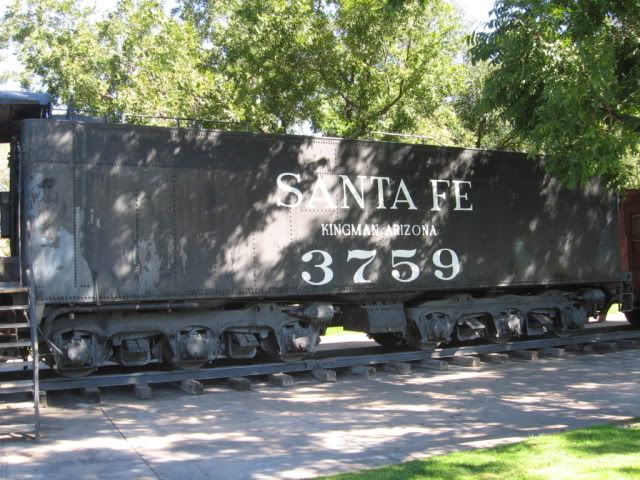Originally Posted by Hudson5432:
The "starting" tractive effort is a CALCULATION, and that is all it is. The .85 you see in the formula is based on the approximate maximum cutoff at starting of 85%, which indicates that steam is admitted into the cylinders for 85% of the stroke. (This formula and the explanation of terms can be found in Locomotive Cyclopedias and a number of other places.) What matters far more is the tractive effort at "running cutoffs", because that is HP! By the way, the ATSF Northerns were a limited cutoff engine (at starting), so the rated TE may be correct, but gives an incomplete indication re how well the Loco can do.
The 2926 is "a lot" larger than almost anything else with two cylinders, due to those expansive western clearances. I saw #2926 several years ago and literally stumbled on it by accident. it was not in good shape, and was sadly neglected. the return of the latest version of the ATSF Northern to service, complete with Timken rods and 16 wheel tender, will be a real milestone and one that I eagerly await. Wife and I want to visit the west (again) and see both this engine and the UP Big Boy in operation. Hope we do not have to wait too long.....
To amplify Hudson5432's point, the ATSF 4-8-4s and 2-10-4s operated with a maximum 60% cutoff, meaning that mean effective pressure was less than 85% of boiler pressure (the generally accepted figure for engines with "full cutoff" ie, steam admitted for 82%-85% of the power stroke).
Therefore, any calculation which arrives at nearly 87,000 lbs of tractive effort for a 2900 class doesn't hold up.
Also, with weight on her 80' drivers being 293860 lbs her factor of adhesion would be 3.38, well below the preferred target of 4.00. This would render her quite slippery at starting.
in the 1940s, the AAR conducted tests on the (at the time) 10 degree curve, on the North Track at Cajon Station, to test stresses on curved rail.
The locomotives tested were an FEF 3 class from the Union Pacific, a GS-4 class from the Southern Pacific and a 3776 class 4-8-4 and a 5011 class 2-10-4 from the Santa Fe.
The 3776 had the same cylinder dimensions, boiler pressure and limited cutoff as the 2900s.
The same test train was accelerated multiple times over the same section of the route by each of the 4-8-4 locomotives
If the Santa Fe engine had that nominal 87000 lb TE it would be expected to accelerate the test train much faster than the other two 4-8-4s, but the UP FEF-3 was the consistent winner in the acceleration department.






























